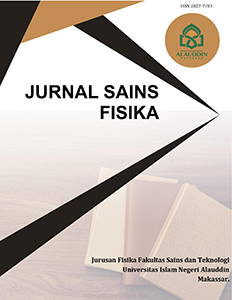POTENSI LAMUN SEBAGAI ANTIKANKER: REVIEW ARTIKEL
Abstract
Seagrass is an indicator of coastal health. Seagrass has benefits for humans, but the utilization of seagrass still needs to be improved. Ironically, however, seagrass was damaged for other purposes. In Indonesia, seagrass research is limited to studies on ecological aspects, their diversity and distribution. This study aims to review articles on seagrass active compounds that can potentially make seagrass anticancer. The technique used is the literature study technique. 12 types of seagrass grow a lot and spread across several Indonesian coasts, namely E. acoroides, T. hemprichii, H. decipiens, H. ovalis, H. minor, C. rotundata, H. pinifolia, S. isoetifolium, C. serrulata , H. uninervis, T. ciliatum and H. spinulosa. From the literature study that has been done, there is potential for seagrass E. acoroides, T, ciliatum and T. hemprichi as anticancer agents. Seagrass contains active compounds that have cytotoxic activity. This allows for other types of seagrass to have potential as anticancer agents.

